

civici musei e gallerie di storia e arte Giusi
Foschia (udine) |
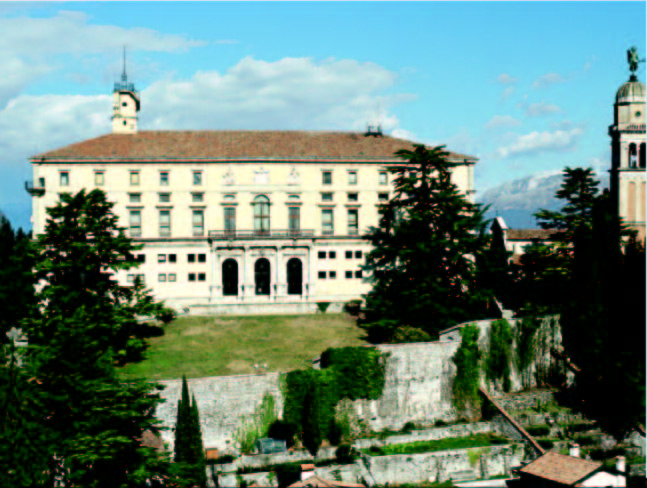 |
Il
castello di Udine sorge al centro della città e fu danneggiato
da due terremoti nel 1348 e nel 1511, l’anno successivo da un incendio;
nel 1560 fu ricostruito da Giovanni Fontana come palazzo di rappresentanza.
Fu sede del tribunale provinciale, della pretura, dell’archivio
notarile e delle carceri; in seguito il palazzo fu gradualmente restaurato
e dal 1878 divenne sede della pinacoteca e del museo friulano ma fu aperto
al pubblico solo nel 1906. |
Udine’s castle is located in the town center. It was damaged by
two earthquakes, in 1348, in 1511 and also by a fire the following year.
In 1560 it was rebuilt by Giovanni Fontana as a representative palace;
it was the seat of the provincial court of law, of the magistrate’s
court, notary’s archives and prisons. Gradually restored at a later
stage, it has been the seat of both the Picture Gallery and Museo
Friulano since 1878, though it was opened to the public only in 1906.
Today, the Civic Museums and the History and Art Galleries include several
sections: The Picture |
|
CIVICI
MUSEI
E GALLERIE DI STORIA
E ARTE Castello di Udine 33100 Udine, Italy tel. +39 0432271591 www.comune.udine.it |
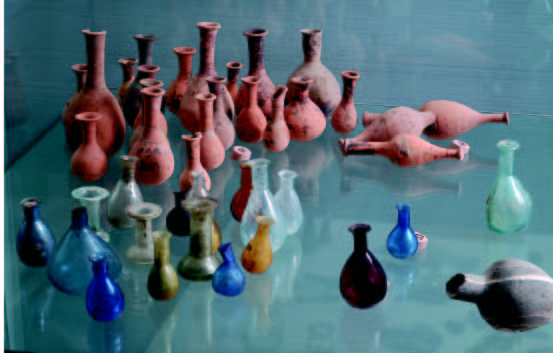
|
Balsamari
/ Balm bowls |
I
balsamari venivano usati per contenere profumi ed essenze ed erano deposti
accanto alle ceneri
The balsamari were used to contain perfumes and essences, and
were either set beside the ashes of the defunct or directly thrown into
the fire during cremation, thus causing the warping of the casing. Fired
clay bowls of lengthened shape or globular belly were used in the Hellenistic
age while – since the mid-1st century A.D. – blown glass creations
were used. |
| Giusi
Foschia Nata a / Born in Udine, 1971 Vive e lavora a / She lives and works in Udine e / and Tarcento (UD) sassfrass@libero.it |
Containers,
2004 |
Giusi
Foschia è da sempre legata alla vita e in particolare alla natura,
ai suoi ritmi e ai suoi colori che racchiude in scatti fotografici essenziali,
esaltando gli effetti del tempo. Crea installazioni con
Giusi Foschia has always been linked up to life
and in particular to nature, to its rhythms and colours, which she encloses
in essential photographic shots, heightening the effects of time. She
creates installations with natural elements and highlights their intrinsic
features. Alvise Rampini |
|
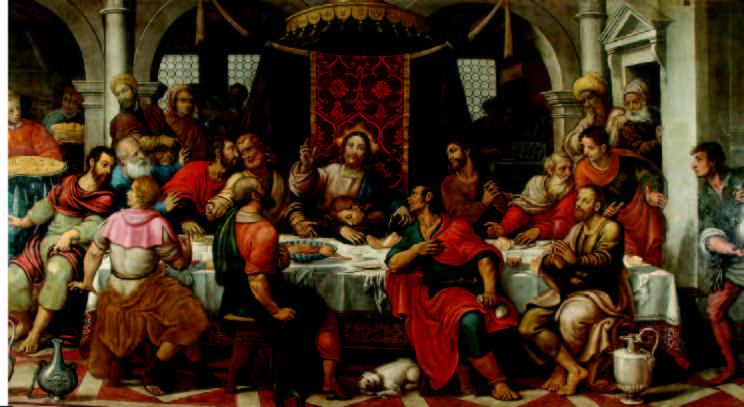
|
Pomponio
Amalteo, Ultima Cena, 1588 |
L’opera presenta una vivace interpretazione dell’episodio biblico, ambientato in una sala rinascimentale dove il pittore sfrutta l’ampia dimensione della tela regalando alla rappresentazione forza e respiro. L’impostazione evidenzia chiari richiami alla scuola veneta con figure ritmate in modo dinamico e personaggi disposti in pose sapientemente scorciate, dove vengono evidenziati con accuratezza alcuni particolari: le espressioni dei discepoli, le vivande sulla tavola, il gatto e il cane che in questo caso rievocano i simboli del tradimento. The works are ascribed to the “Master of the half length”, who was active between the third and fourth decade of the 16th century. His identity and biography are unknown, but his rather homogeneous catalogue is known and some of his works are kept also in Italy. The author receives his name from his formal repertoire, full of holy young women and rich ladies, represented in halflength. The calmness and formal composure, as well as the almost intimist atmosphere evoked by the paintings testify for the ascription to the circle who was active around this anonymous artist. |
| Silvia
Giusti Nata a / Born in Monfalcone (GO), 1970 Vive e lavora a / She lives and works in Udine silviussa@libero.it |
Food&Kiss
|
La
ricerca grafica di Silvia Giusti si interessa all’elaborazione dinamica
delle immagini, con l’utilizzo di cromie intense e di forte impatto.
L’opera risulta volutamente mossa e non perfettamente a fuoco così
da dare la possibilità di una lettura in continuo divenire e di
un’interpretazione mai definitiva. Il suopercorso continua con il
gioco/polemica dell’inserimento del tricolore in contesti non conformi,
rendendolo elemento di disturbo o possibilità di riattivare/attirare
l’attenzione sul vero tema dell’opera.
Silvia
Giusti’s graphic research is committed in the dynamic processing
of images, with the use of intense, strong impact chromaticity. Her work
is deliberately blurred and not perfectly focused to provide an understanding
in continuous becoming and a never definite interpretation. The path continues
with the introduction of the Italian tricolor in unfitting contests, thus
making it an element of disturbance, or a way to reactivate/catch the
attention on the actual theme of the work. Alvise Rampini |
|
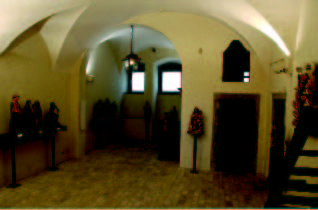
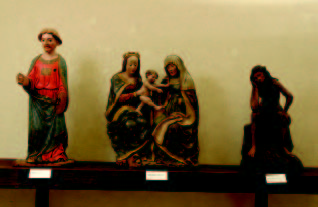 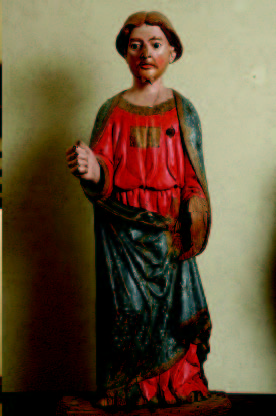
|
Sculture
lignee policrome della Collezione Ciceri / |
La
collezione Ciceri è uno dei lasciti più interessanti di
proprietà dei Civici Musei di Udine.
The Ciceri collection is one of the most interesting legacies owned by
Udine’s Civic Museums. |
| Peter
Belyi Nato a / Born in Sankt Petersburg, 1971 Vive e lavora a / He lives and works in Sankt Petersburg crimeandpunishment@peterlink.ru |
Metaphysical
slide-monument, 2004 |
L’oggetto
imita la forma della Torre di Pisa, con le pareti fatte di innumerevoli
diapositive a rappresentare l’arte italiana classica e la vita in
Unione Sovietica negli anni 1960-1970. La torre è illuminata dall’interno
mediante luci al neon. Lampeggiano e consentono al fruitore di vedere
per un
The object imitates the shape of the Tower of Pisa,
its walls made of innumerable slides representing Marina Jigarkhanian |
|